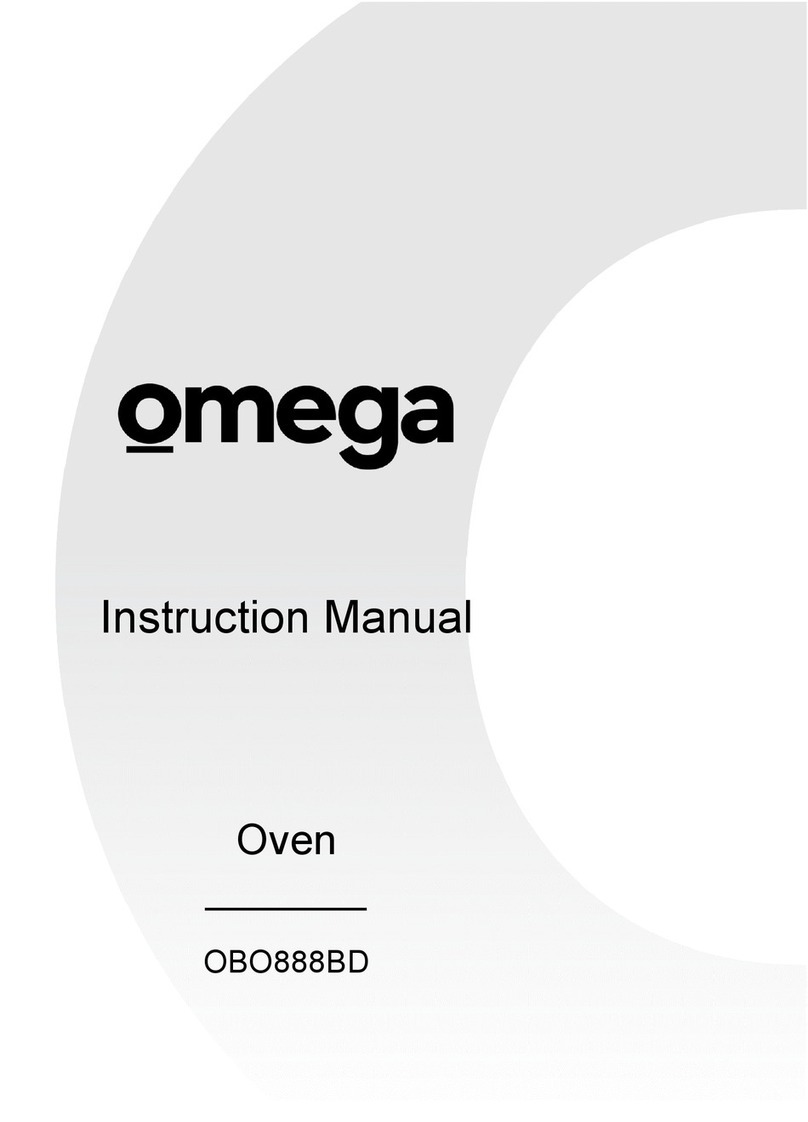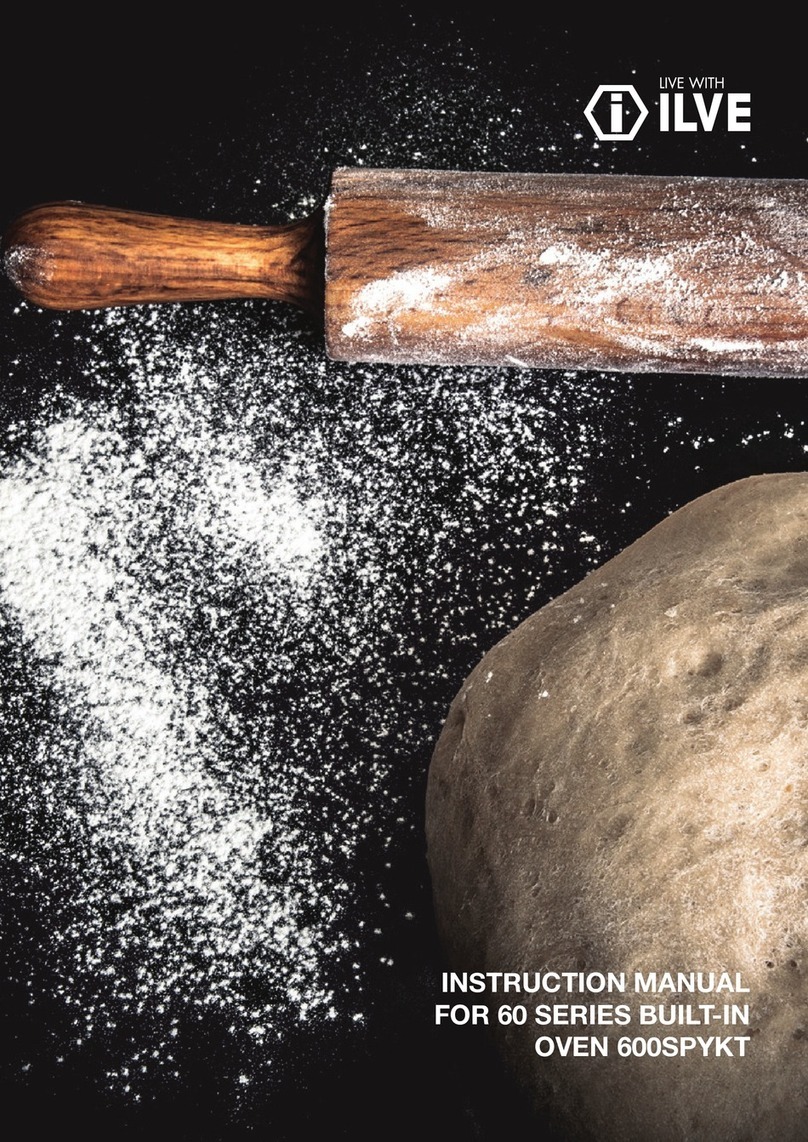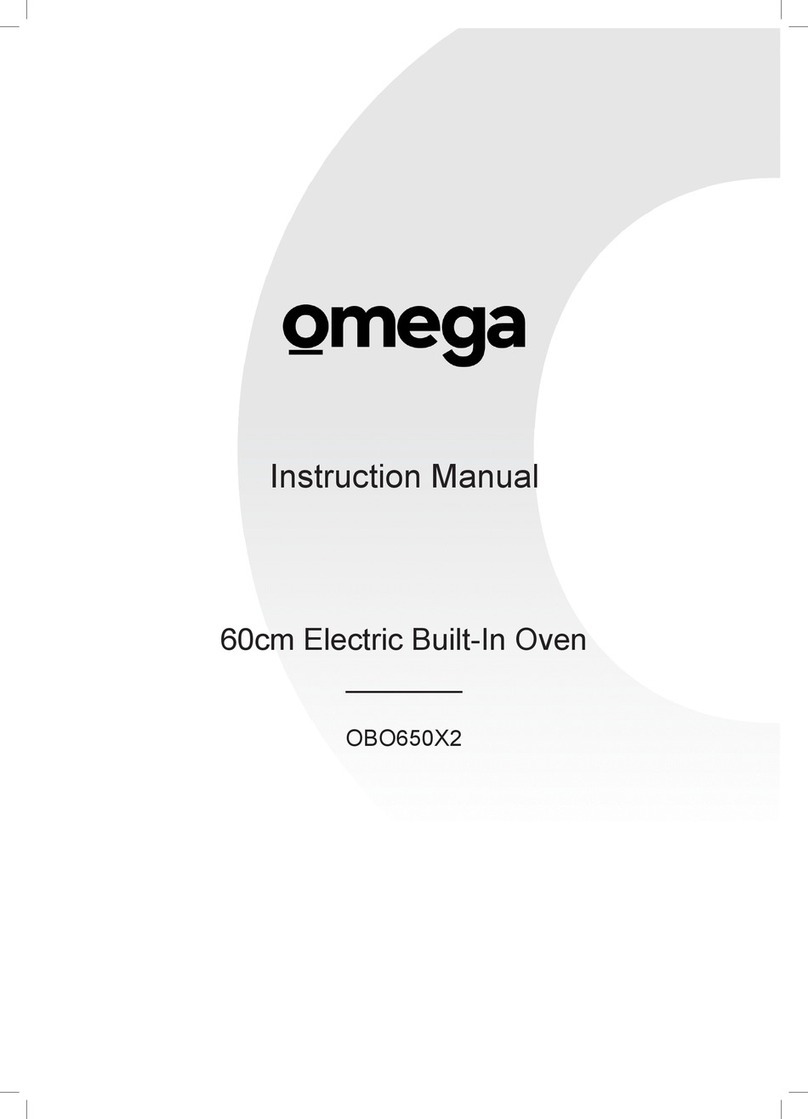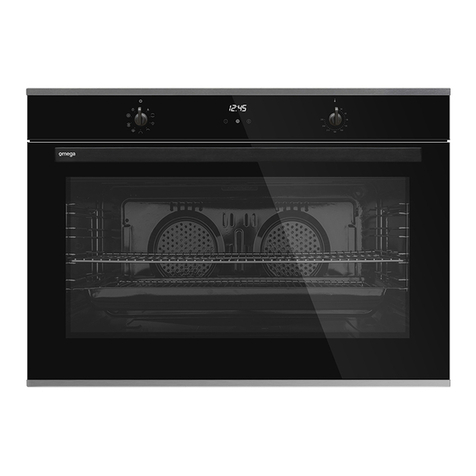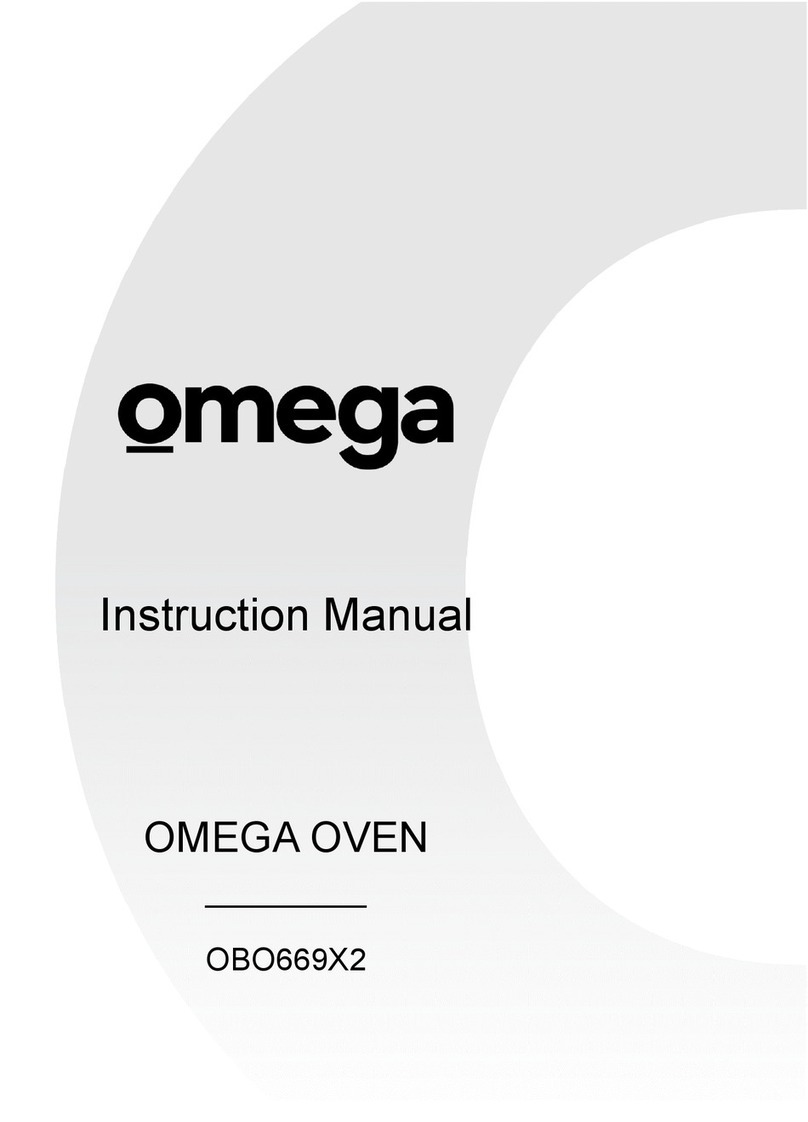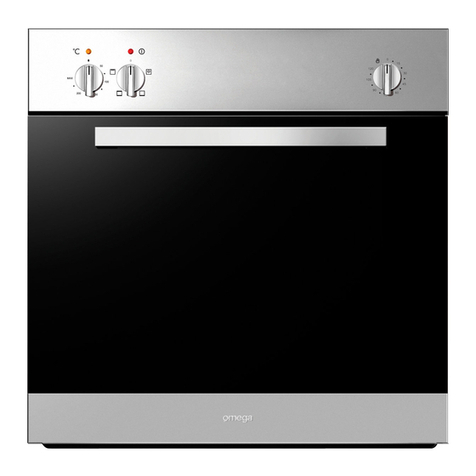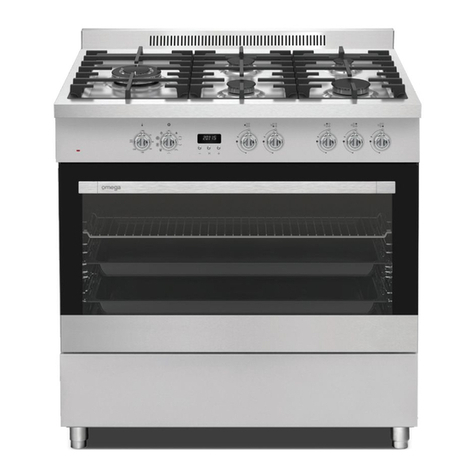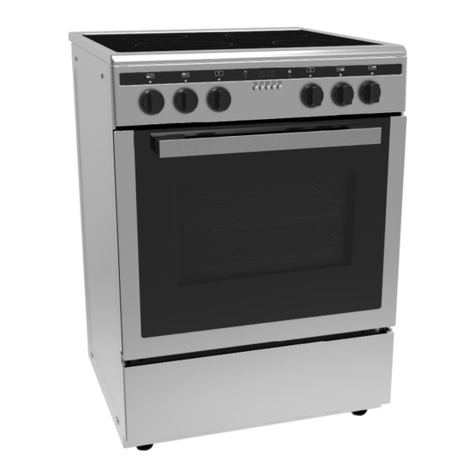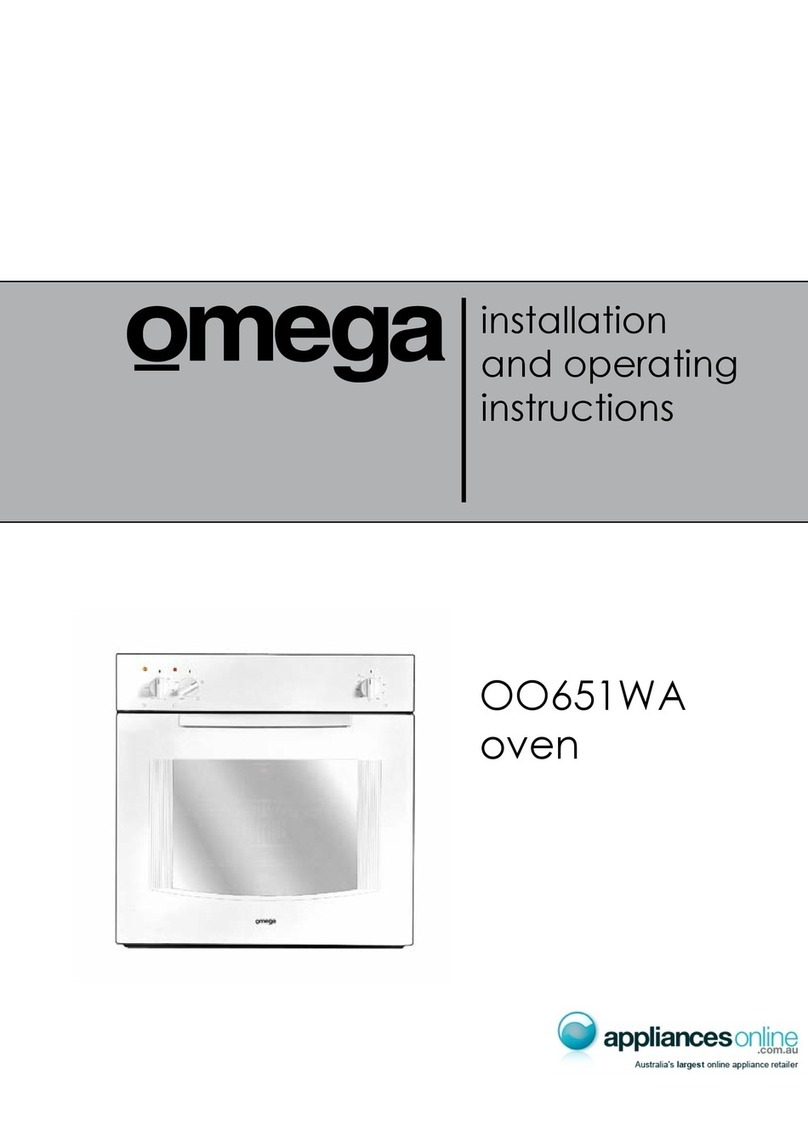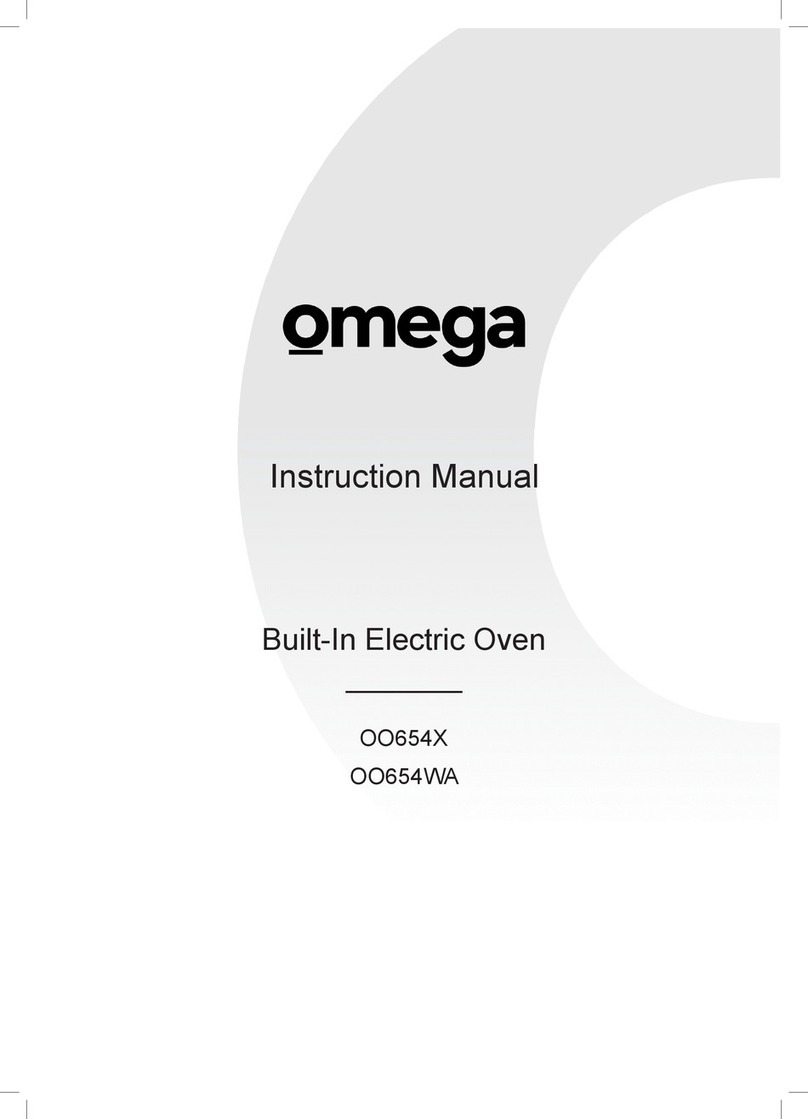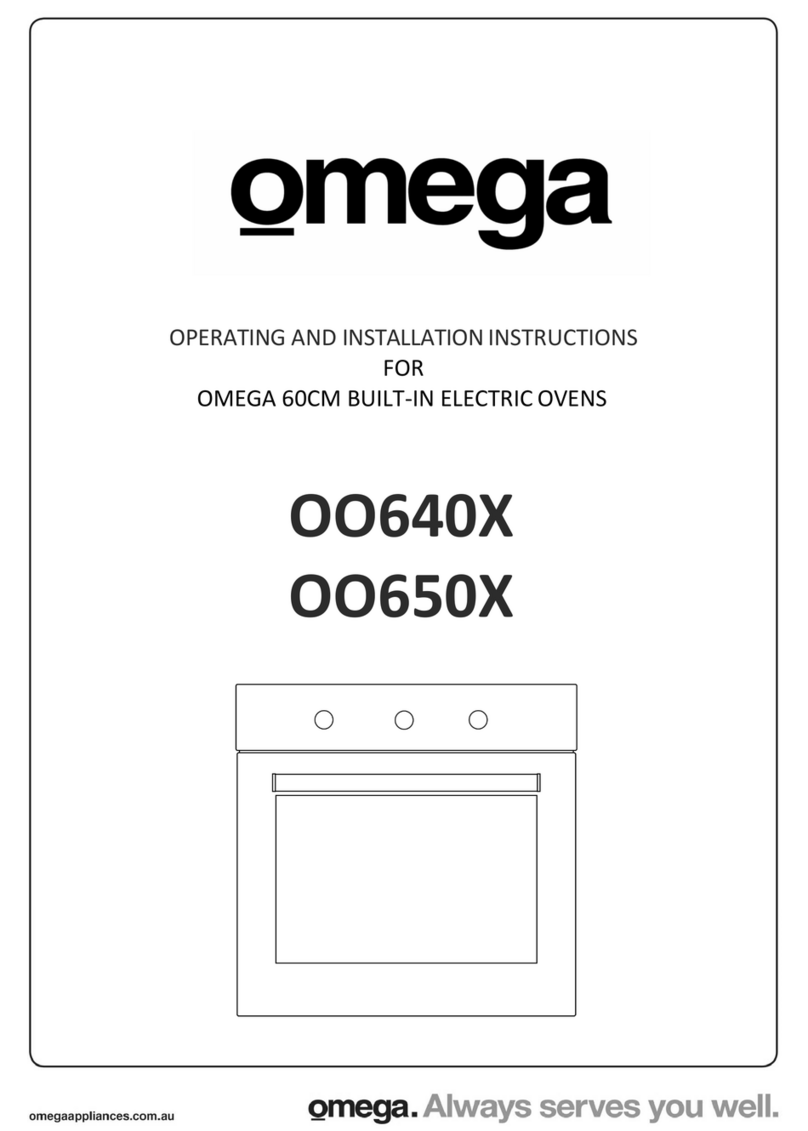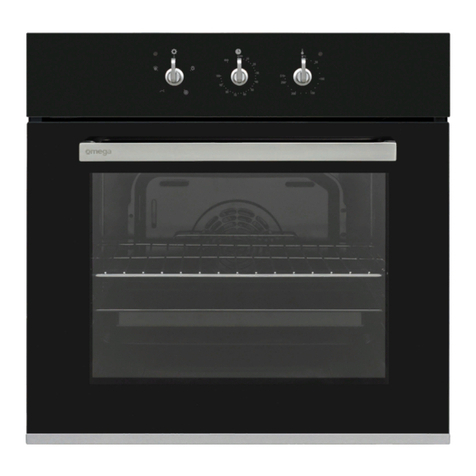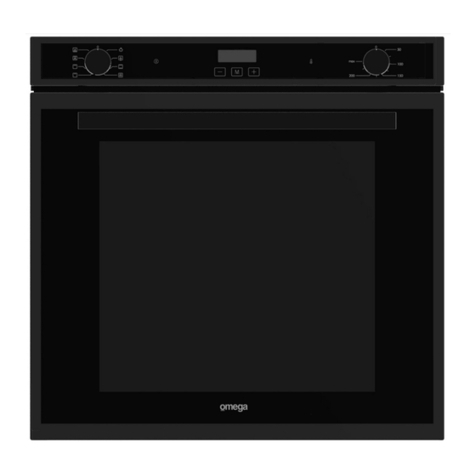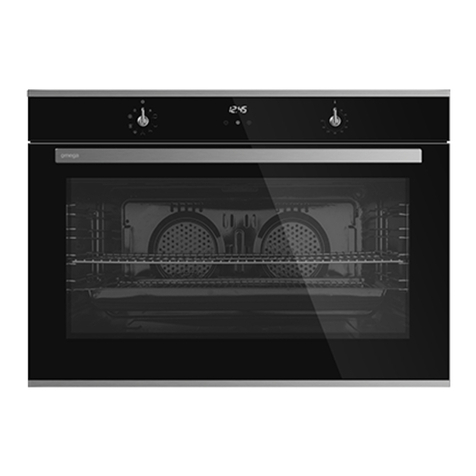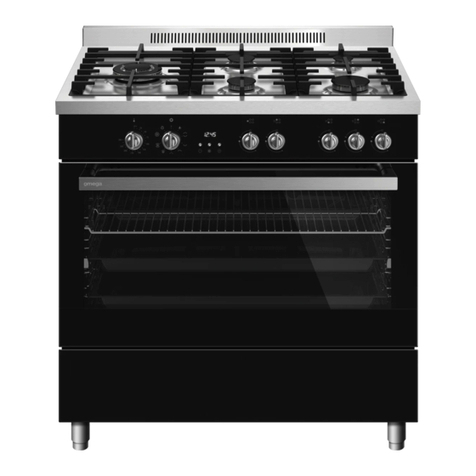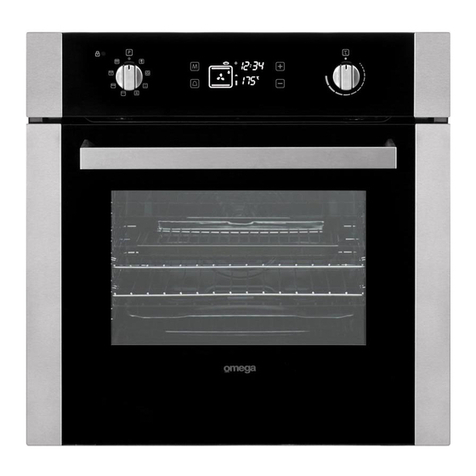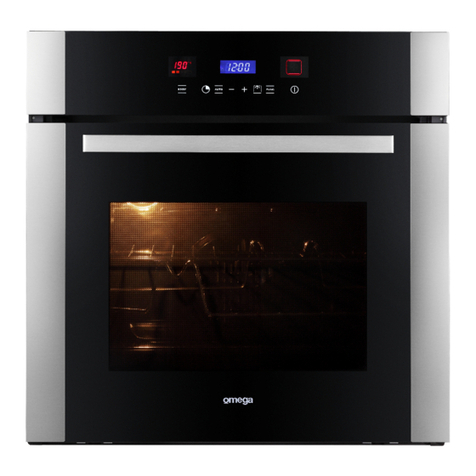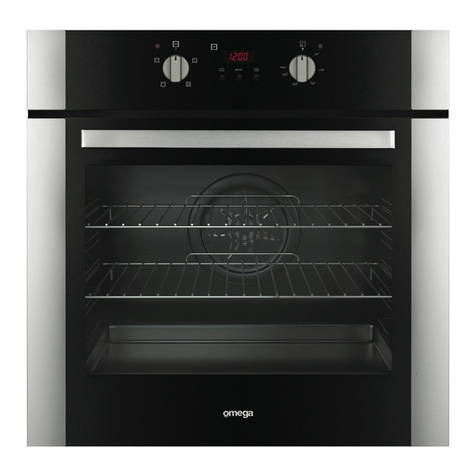Connection
to the
electrical
power
mains
W
ARNING
This
apparatus
must be
ear
thed.
The oven is only for domestic use.
The feed voltage and the absorbed power are as indicated on the data plate attached to
the left-hand side upright, which can be seen when the oven door is open.
Connecting must be carried out by qualified personnel and in accordance with the
regulations currently in force.
The manufacturer cannot be held responsible for any damages to persons or objects
caused by failure to observe these instructions.
If the supply cord is damaged, it must be replaced by the manufacturer, its service agent
or similarly qualified persons in order to avoid a hazard.
The oven must be connected to the mains through a multipole circuit breaker with
a contact-to-contact gap of at least 3 mm, making sure that the earth wire is not
disconnected. For connecting use a flexible cable of the H05V2V2-F 3x1,5 mm2 type
remembering to make it long enough to allow the oven to be removed from its housing
unit when maintenance work is required.
To connect the cable to the oven
proceed as follows (see Fig. 2):
- Remove the lid (1) by unfastening the
three screws (2). Unfasten the two
screws (3) for the cable holder and
feed the cable through the opening
immediately below the cover.
- Remove about 12 cm of the outside
insulation from the cable and
shorten the two active wires (live and
neutral) to 6 cm, leaving long the one
to be connected to the main earth
terminal on the terminal box; remove
about 1 cm of the main insulation
from the three wires and connect
them correctly to the terminal box,
remembering to respect the polarities.
Fig. 2
- Tighten the two screws (3) of the cable holder and put the lid (1) back on with the three
screws (2).
WARNING:
If the electrical supply is restricted, means of all-pole
disconnection
must be accessible and
incorporated in the fixed wiring in
accordance
with the wiring
rules.
